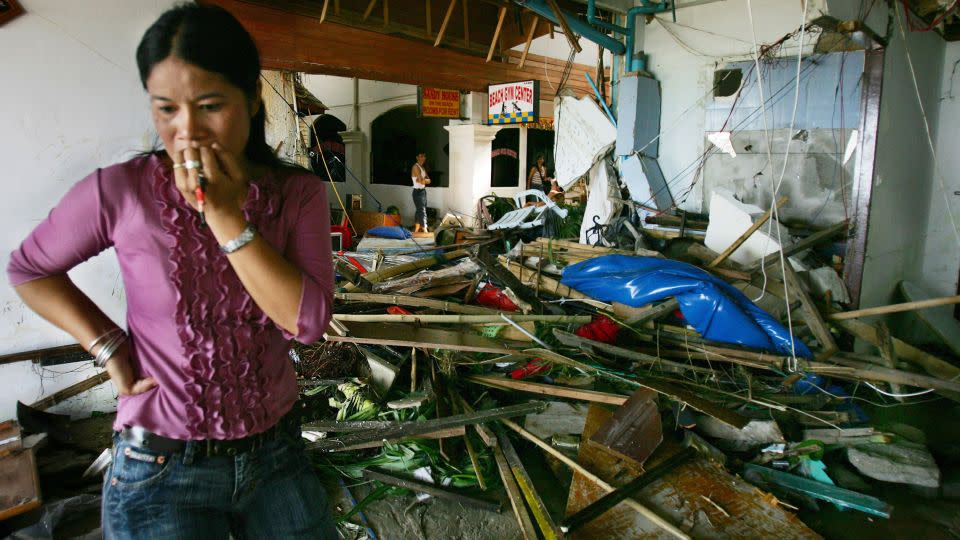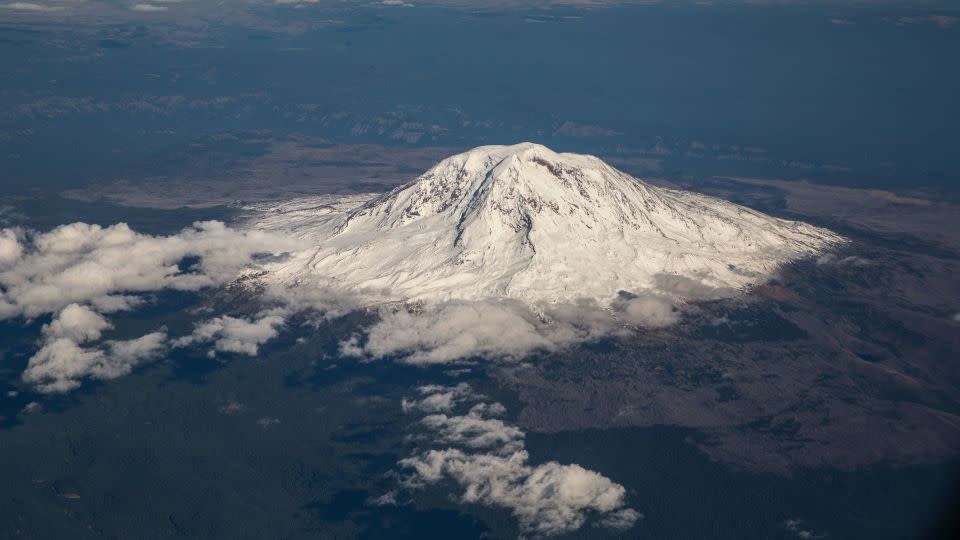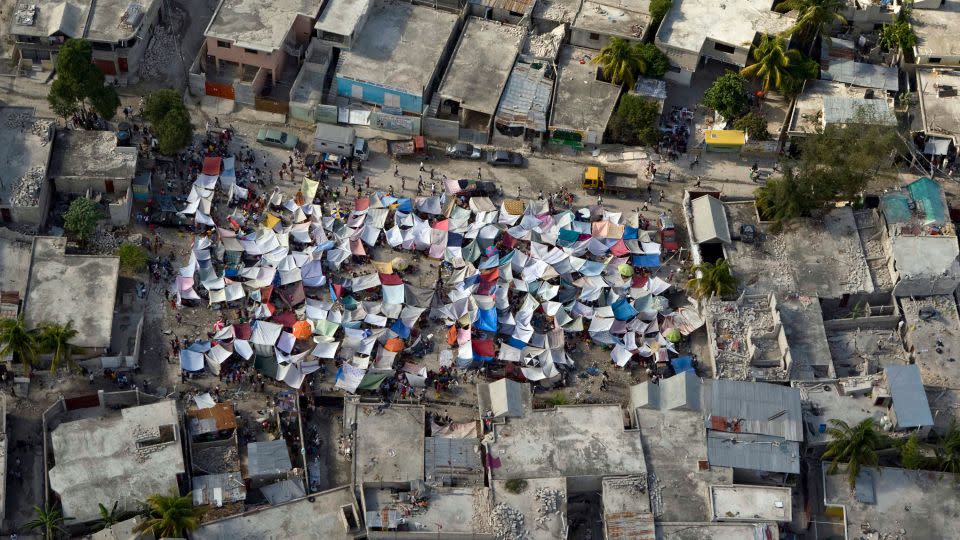Opinion: ‘The big one’ disaster could happen in our lifetime. Can we even be ready?
Editor’s Note: Jeff Schlegelmilch is a research scholar and the director of the National Center for Disaster Preparedness at the Columbia Climate School at Columbia University. He is the author of “Rethinking Readiness: A Brief Guide to Twenty-First-Century Megadisasters” and co-author of “Catastrophic Incentives: Why Our Approaches To Disasters Keep Falling Short.” The opinions expressed in this commentary are his own. Read more opinion at CNN.
I was driving from my hotel room in Gaziantep, Turkey, to the Hatay region last fall, about eight months after the devastating magnitude 7.8 earthquake that was one of the strongest temblors to hit the country in more than a century. I was expecting to see communities emerging from the rubble and rebuilding. I expected visible scars and a slow recovery, with some progress made and emerging areas of normalcy.
But as we approached the epicenter of the damage, I realized this disaster was different.
Building after building had large cracks throughout, while many other structures had partially or totally collapsed. Interspersed across the landscape were makeshift camps with tents, which were gradually being replaced by encampments of thin-walled “containers” (think shipping containers used to house people). There was virtually no surviving housing in the worst-hit areas, limited infrastructure was functioning and demolition of damaged buildings was only starting to push forward.
Meeting after meeting with local officials and residents reflected eight months of standing still, persistent trauma and recovery stunted while the rest of the world moved on. One elected official told our group that if we wanted to give assistance to children, that was okay — but for the adults, they said the only thing we could do to help was to take them back to America with us.
Building codes were in place to prevent such a tragedy, but sadly few structures were built to this standard. The country’s Disaster and Emergency Management Authority is active but relatively new in its current form, having been consolidated as a single agency only in 2009. Digging out from the rubble, it is estimated that the monster quake killed more than 53,000 people and displaced 3 million more in Turkey and neighboring Syria.

Tragedies of this scale are major disasters — and begin to approach what we refer to as a “megadisaster.”
Disasters come in all shapes and sizes: from the extreme society-ending disasters such as the destruction of Pompeii with the eruption of Mt. Vesuvius in 79 CE to the simple house fire that may mean little to passers-by but has shattered the whole world of the family who resides there.
But in a megadisaster, the very resources and systems we rely upon to respond to and recover from disasters are destroyed or otherwise overwhelmed as systems fail and rescue and recovery are nearly impossible. The needs in a house fire are addressed by a local fire department, the survivors’ network of family and friends and maybe a local chapter of a nonprofit such as the Red Cross. The recovery in Turkey is slow, but it has been advanced by bringing in resources from donors and supplies from other parts of Turkey, as well as other countries. In ancient Pompeii, there were no resources to draw upon. The entire city was devastated. Every option for external assistance was disrupted and there was nowhere to go for help.
This is a megadisaster. And there is little that your emergency managers can do about it once it happens.

Expanding how we see megadisasters
There are also mega threats beyond “the big one” quake feared along a ruptured fault or a waking “very high threat” volcano. As explained in detail in my book, “Rethinking Readiness: A Brief Guide to Twenty-First-Century Megadisasters,” there are categories of calamities with the potential to become megadisasters including biothreats, extreme weather related to climate change, infrastructure failure such as a power grid going down, cyberthreats and nuclear conflict. In each of these scenarios, our development of societies enhances the threats and our underlying vulnerability to them.
Biothreats, including the possibility of a pandemic that would dwarf the Covid-19 pandemic, stalk us with pathogens such as highly pathogenic avian influenza lurking in the background. The prospect of biological weapons reads like something out of a science-fiction novel, but these are real threats: Advances in genetic engineering are lowering the technical barriers to build sophisticated bioweapons, with potentially devastating consequences.
Unprecedented heat and extreme-weather events are breaking records and have cost trillions of dollars in the past few decades in the US alone. This has all been bought and paid for with our disaster funds, national deficit, and absorbed by our large economy. But there are breaking points. Deficits are growing, and spending on disasters is increasingly coming into question with projections of costs set to continue to spiral without reductions in greenhouse gas emissions. These hazards are also threatening to make some parts of the world, such as the Middle East, virtually uninhabitable without extreme reliance on cooling infrastructure. Some small island nations may vanish entirely because of sea-level rise. The implications for state stability, global migration and military assets pose such a risk to national security that the Defense Department and other agency leaders have been increasingly sounding the alarm on climate change.
Our vulnerability from crumbling infrastructure and potentially “catastrophic” cyber threats continues to be front and center in the news, with a ship crashing into Baltimore’s Key Bridge, leading to its subsequent collapse, giving us just a small taste of what is possible when our critical arteries and systems go down. And, of course, with Russia’s war in Ukraine, among other global tinderboxes involving nuclear powers, nuclear war is now arguably more likely than it was during the Cold War.
A megadisaster could strike a catastrophic blow at the outset or could cause widespread death and destruction through a slow burn of cascading impacts such as a nuclear winter from atomic blasts, or prolonged droughts leading to crop failures, mass famines and the collapse of governments.
While emergency managers around the world already have their hands full with disasters of increasing scope, severity and frequency, megadisasters could overtake the very systems we rely upon to manage disasters.

The limits of emergency management
A friend and respected colleague in the field once referred to disasters as a “numbers game”: You have to garner limited resources across relatively siloed organizations, within and outside of government, and get them to work together to help response and recovery in the greatest way possible — getting things like water, food, medicine, fuel and temporary shelters where they are needed most.
The practice of emergency management has generally originated from the first responder community and the civil defense era, primarily with a focus on consequence management. Early disaster researchers like Enrico Quarantelli found disasters to be whole-of-society phenomena, where everyone comes together and recovery works — or they don’t, and it doesn’t. But as emergency management agencies have been designed, emergency management systems have been shaped by laws and agreements across government bureaucracies and partners in the private and nonprofit sectors with a narrower focus on managing consequences, focused more on logistics than sociology.
Over the past several decades, the aperture of the emergency manager has widened to take a broader look beyond the procedures. In the United States, this has been encapsulated with a transition from talking about “preparedness” to words like “resilience.” The Federal Emergency Management Agency (FEMA) now speaks of a whole community approach to disasters, and even includes community lifelines as a key lens for understanding recovery and resilience. These approaches look at how society works, across multiple independent businesses, organizations and agencies and what is needed to make recovery happen — such as delivering transportation, communications, safety and security, food, water and shelter.
Globally, a similar trend is taking hold, with the United Nations Office for Disaster Risk Reduction (UNDRR) building off of global disaster frameworks and moving toward disaster planning that acknowledges the complexity of how civil society operates, recognizing that we need to engage across communities including the public and private sectors to build partnerships before disaster strikes.
But disaster management in practice is still fundamentally a numbers game.
Megadisasters decimate the supplies needed to respond to a disaster and destroy systems needed to manage catastrophes. A disaster becomes “mega” through the hubris of societal development that amplifies our vulnerability, the weaponization of our science and technology for greater gain that increases the threat and tipping points where the bad things get too far away from us. The warning signs are written in the history books of past societies destroyed, the models and projections from scientists studying the growing threats and even in the imagination of fiction writers and Hollywood films. But they are ultimately ignored until they can no longer be denied.

How do we even manage megadisasters?
Megadisasters are formed through development policies. The most obvious is the infrastructure we rely on.
Imagine the roads for transporting our food, the power lines ferrying electrons to power our lives and the internet behind our bank accounts, navigation systems, health monitoring devices and much more. The more we rely on these advances, the more devastating it is when they are taken from us.
Building resilience into these infrastructure investments is critical to reduce the potential for disaster, but we don’t do a good job of acknowledging the value of that additional investment — so we spend less and ask “why” when the infrastructure we rely upon fails us.
The consumption of resources for growth, conquest and conflict to attain those resources and incentive structures are designed to reward short-term, visible outcomes rather than true preparedness and resilience building.
We want to see the condo development built and sold with a nice view of the water, rather than spend more time and money to reinforce and elevate it to withstand the hurricane, or maybe even not build in harm’s way at all and leave that parcel of land empty (and without tax revenue). We need the new road built and opened today, even if tomorrow it may be flooded. And donors want to see pictures of people happy to be moving from a tent to a container shelter, and not earthquake-resilient housing built that takes several decades to build and should have been.
Where we build, how we build and whom we protect are all factors that are outside of the sphere of influence of an emergency manager, yet they are the ones who clean up the mess when political incentives, corporate shareholder demands and donor insistence on immediate and photogenic post-disaster results prevent us from meaningfully investing in our own resilience.
To reduce the risk of megadisasters we need to look to sustainable development — and the underlying incentives that drive our development — and better integrate the hard-earned wisdom of our emergency managers to better understand the consequences of our decisions before we make them.
There are early steps being taken with a shift domestically to funding resilience in infrastructure bills, and internationally with a shift in focus to climate adaptation funding, as well as increased interest in utilizing the private sector to finance resilience. These investments can have dramatic impacts on disasters. Look at similar-sized earthquakes in Japan and Haiti: In a country with limited building codes and little money to invest in resilience measures, a magnitude 7.0 earthquake in 2010 became one of the worst disasters in modern history. Japan is one of the wealthy nations that experience earthquakes frequently, and a 7.0 in 2021 caused very little damage.
Strong emergency management agencies are also important. The toll of earthquakes like the ones in Turkey would be better confronted by strong response and recovery systems, which can stop runaway impacts from the extended loss of community lifelines including water, power and healthcare. But while we need stronger and more robust emergency management agencies to help us with the increase in major disasters, we need to think bigger to prevent looming megadisasters — otherwise, there may not be future generations of archaeologists to sift through the ashes and marvel at a society that once was.
For more CNN news and newsletters create an account at CNN.com

